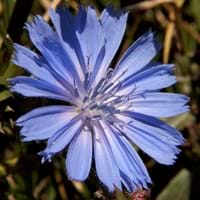Life Span
Perennial
Perennial
Type
Grass
Flowering Plants, Shrubs, Vegetable
Origin
North America, Canada, Mexico
Mediterranean
Types
Bigleaf hydrangea, Hortensia, Smooth hydrangea, Oakleaf hydrangea, Annabelle
Belgian Endive, Red Belgian Endive, Curly Endive (a.k.a. Frisee), Escarole, Radicchio (Chioggia) and Radicchio (Chioggia)
Habitat
Forest edges, Hillside, Woods
Grassland, Mediterranean region, Wild
USDA Hardiness Zone
Not Available
3-9
Sunset Zone
1a, 1b, 2a, 2b, 3a, 3b, 4, 5, 6, 7, 8, 9, 10, 11, 14, 15, 16, 17, 18, 19, 20, 21, 22, 23
A1, A2, A3, H1, H2, 1a, 1b, 2a, 2b, 3a, 3b, 4, 5, 6, 7, 8, 9, 10, 11, 12, 13, 14, 15, 16, 17, 18, 19, 20, 21, 22, 23, 24
Habit
Upright/Erect
Clump-Forming
Flower Color
Blue, Dark Purple, Light Purple, Red, White
Blue
Flower Color Modifier
Bicolor
Not Applicable
Fruit Color
Not Available
Brown
Leaf Color in Spring
Green, Light Green, Blue Green, Gray Green
Green
Leaf Color in Summer
Light Green
Green
Leaf Color in Fall
Red, Green, Orange, Blue Green, Gray Green, Bronze
Green
Leaf Color in Winter
Tan, Sandy Brown
Green
Leaf Shape
Oblovate
Oblong
Plant Season
Spring, Summer, Fall, Winter
Summer
Sunlight
Full Sun, Partial Sun
Full Sun, Part sun
Type of Soil
Clay, Loam, Sand
Loamy, Sandy
The pH of Soil
Acidic, Neutral, Alkaline
Acidic, Alkaline, Neutral
Soil Drainage
Average
Well drained
Bloom Time
Early Summer, Summer, Late Summer
Summer
Tolerances
Pollution, Soil Compaction
Not Available
Where to Plant?
Container, Ground
Ground
How to Plant?
Seedlings, Stem Planting
Seedlings
Plant Maintenance
Medium
Medium
Watering Requirements
Not Available
Keep the ground moist but not water-logged, Prefer drip-irrigation instead of Over-head watering, Requires regular watering, Requires watering in the growing season
In Summer
Drought Tolerant, Average Water
Lots of watering
In Spring
Moderate
Moderate
In Winter
Average Water
Average Water
Soil pH
Not Available
Acidic, Alkaline, Neutral
Soil Type
Not Available
Loamy, Sandy
Soil Drainage Capacity
Not Available
Well drained
Sun Exposure
Not Available
Full Sun, Part sun
Pruning
Remove damaged leaves, Remove dead branches, Remove dead leaves
Cut or pinch the stems, Prune prior to new growth, Prune to stimulate growth, Remove dead or diseased plant parts, Remove deadheads
Fertilizers
All-Purpose Liquid Fertilizer
All-Purpose Liquid Fertilizer
Pests and Diseases
Red blotch
Aphids, Loopers, Root rot, Viruses, Worms
Plant Tolerance
Pollution, Soil Compaction
Drought
Flower Petal Number
Single
Not Available
Foliage Texture
Fine
Medium
Foliage Sheen
Not Available
Matte
Invasive
Not Available
Sometimes
Self-Sowing
Not Available
Yes
Attracts
Bees, Flies
Butterflies
Allergy
Chest tightness, Diarrhea, Dizziness, Nausea, Vomiting
Not Available
Aesthetic Uses
Not Available
Not Used For Aesthetic Purpose
Beauty Benefits
Not Available
Not Available
Edible Uses
Not Available
Yes
Environmental Uses
Air purification
Air purification
Medicinal Uses
Fever, Kidney problems, Urinary tract problems
Cancer, Digestive disorders, Inflammation, Liver problems, Stomach pain
Part of Plant Used
Flowers, Root
Leaves, Root
Other Uses
Not Available
Used as an ingredient in coffee
Used As Indoor Plant
Not Available
No
Used As Outdoor Plant
Yes
Yes
Garden Design
Not Available
Not Available
Botanical Name
PANICUM virgatum 'Northwind'
Cichorium intybus
Common Name
Northwind Switchgrass, Switchgrass
Blue daisy, blue dandelion, blue sailors, blue weed, bunk, coffeeweed, cornflower, hendibeh, horseweed, ragged sailors, succory, wild bachelor's buttons, and wild endive
In German
Hortensie
Chicoree
In French
Hortensia
chicorée
In Spanish
Hortensia
achicoria
In Portuguese
Hortênsia
chicória
In Polish
Hortensja
cykoria
In Latin
Hibiscus
pancratium
Phylum
Not Available
Magnoliophyta
Class
Not Available
Magnoliopsida
Order
Not Available
Asterales
Family
Not Available
Asteraceae
Genus
Not Available
Cichorium
Clade
Not Available
Angiosperms, Asterids, Eudicots
Tribe
Not Available
Cichorieae
Subfamily
Not Available
Cichorioideae
Number of Species
Not Available
Not Available
Season and Care of Northwind Switchgrass and Chicory
Season and care of Northwind Switchgrass and Chicory is important to know. While considering everything about Northwind Switchgrass and Chicory Care, growing season is an essential factor. Northwind Switchgrass season is Spring, Summer, Fall and Winter and Chicory season is Spring, Summer, Fall and Winter. The type of soil for Northwind Switchgrass is Clay, Loam, Sand and for Chicory is Loamy, Sandy while the PH of soil for Northwind Switchgrass is Acidic, Neutral, Alkaline and for Chicory is Acidic, Alkaline, Neutral.
Northwind Switchgrass and Chicory Physical Information
Northwind Switchgrass and Chicory physical information is very important for comparison. Northwind Switchgrass height is 150.00 cm and width 90.00 cm whereas Chicory height is 3.00 cm and width 1.50 cm. The color specification of Northwind Switchgrass and Chicory are as follows:
Northwind Switchgrass flower color: Blue, Dark Purple, Light Purple, Red and White
Northwind Switchgrass leaf color: Green, Light Green, Blue Green and Gray Green
Chicory flower color: Blue
- Chicory leaf color: Green
Care of Northwind Switchgrass and Chicory
Care of Northwind Switchgrass and Chicory include pruning, fertilizers, watering etc. Northwind Switchgrass pruning is done Remove damaged leaves, Remove dead branches and Remove dead leaves and Chicory pruning is done Cut or pinch the stems, Prune prior to new growth, Prune to stimulate growth, Remove dead or diseased plant parts and Remove deadheads. In summer Northwind Switchgrass needs Drought Tolerant, Average Water and in winter, it needs Average Water. Whereas, in summer Chicory needs Lots of watering and in winter, it needs Average Water.




